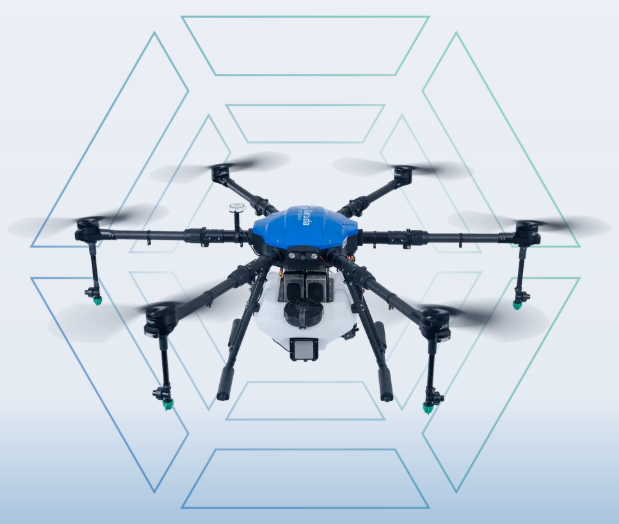Spray Drone

Specifications
Tank Capacity:
5 to 30 liters, depending on the model (e.g., DJI Agras T20 = 20L)
Flight Time:
10–25 minutes (heavily depends on payload and wind)
Spraying Width:
4 to 8 meters per pass
Higher-end drones can cover wider areas with multiple nozzles
Flow Rate:
1–8 liters per minute adjustable
Controlled via pump pressure and nozzle type
Battery Capacity:
High-capacity LiPo (e.g., 12,000–20,000 mAh)
Often hot-swappable for continuous operation
GPS & RTK Support:
Accurate GPS or RTK-based positioning for precise spraying routes
Payload Capacity:
Ranges from 10 kg to 40+ kg (including liquid + drone weight)
Nozzle Type:
Centrifugal or pressure-based nozzles
Supports atomized spray for fine mist
Flight Range:
Usually 2–5 km depending on remote controller and battery
Frame Size:
Typically 1.5 m to 3 m diagonal wheelbase
Wind Resistance:
Up to 12 m/s (~43 km/h)
Materials:
Carbon fiber or aviation-grade aluminum for corrosion resistance
Features
Automated Spraying System
Pre-programmed flight paths for autonomous spraying
Even spraying with terrain-following capability
Terrain Following with Radar/LiDAR
Adjusts altitude in real-time based on crop height or ground level
Real-Time Flow Control
Intelligent pump control to maintain consistent flow rate
Obstacle Avoidance
Equipped with radar or vision sensors for detecting trees, poles, etc.
Foldable Design
Compact and easy to transport and deploy
Remote Operation
Spray controlled via ground controller or mobile app
Manual and auto modes supported
Multi-Zone Spray Mapping
Ability to map fields into zones for different treatments
Anti-Corrosion Build
Designed to handle liquid chemicals without damage
Low Drift Spraying
Uses low-altitude spraying with downwash airflow to reduce chemical drift
Dual/Quad Nozzle Systems
For more precise and faster spraying
Data Logging & Reports
Logs spray rate, area covered, battery usage, etc.
Multiple Use Cases
Fertilizer spraying, pesticide application, seed spreading (optional attachments)
